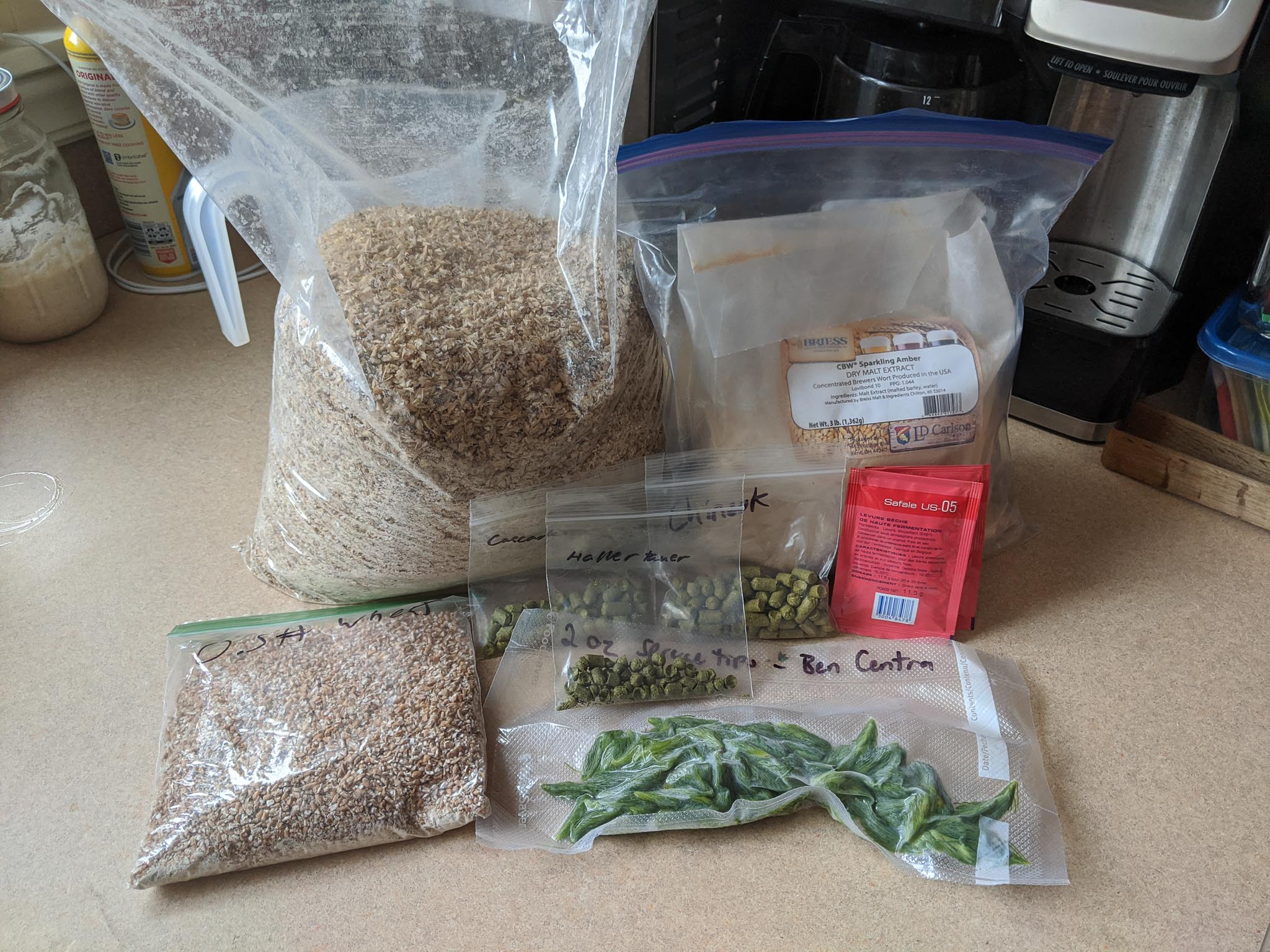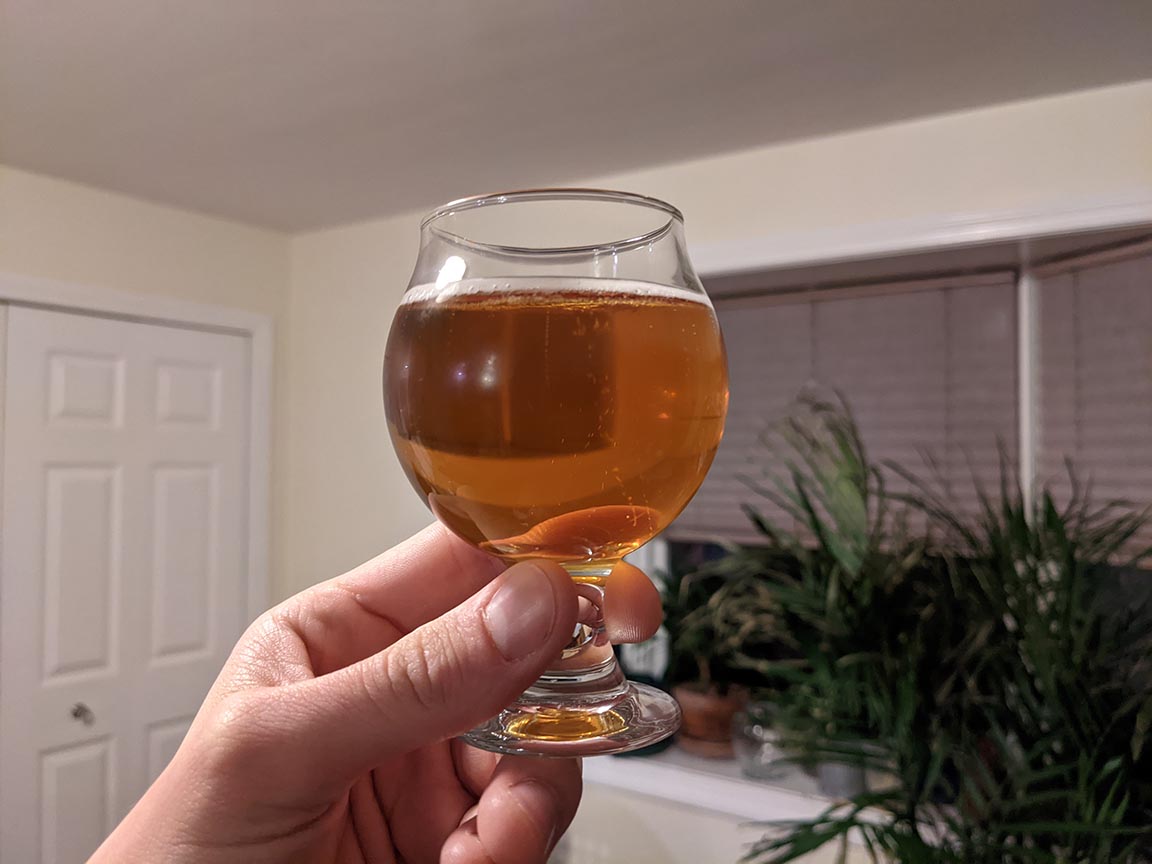Spruce Tip Pale Ale
by Ben Centra
Hops weren’t always the primary bittering agent in beer; many different plants and herbs have been used throughout the history of beer making. One common ingredient, from ancient Scandinavia to colonial America, is spruce tips. In early spring, the fresh grown tips of various spruce tree species can be harvested and used in, among other things, your next homebrew. The flavors imbued by spruce tips range from citrus to herbal to mint to, you guessed it, pine.
If you're not lucky enough to have a spruce tree in your yard, keep your spruce tips frozen until you can brew!
Lucky for me, one of the members of the Post Modern Brewers has a spruce tree in his yard. He harvested plenty and shared them with the club, two ounces each. For my offering, I decided to make an approximation of Greenwarden from Banded Brewing out of Biddeford, Maine. I didn’t have the exact recipe, but they listed the grain bill and hops on the label. A little fiddling in BeerSmith later and I had a viable recipe!
Specs
| Styles | American Pale Ale (BJCP 18B) |
| Recipe Type | All Grain |
| Batch Size | 2 Gallons |
| Original Gravity | 1.054 |
| Final Gravity | 1.016 |
| ABV | 5% |
| IBUs | 40 |
| Color | 6 SRM |
Ingredients
| Fermentables | ||
|---|---|---|
| Kind | Amount | Color |
| US 2-Row | 3 lb | 2°L |
| Crystal 20L | 0.5 lb | 20°L |
| Wheat Malt | 0.5 lb | 2°L |
| Hops | |||
|---|---|---|---|
| Kind | Amount | % AA | Time |
| Chinook | 0.35 oz | 13% | 60 min |
| Other | |||
|---|---|---|---|
| Kind | Amount | Stage | Time |
| Spruce Tips | 1.75 oz | Boil | 15 min |
| Yeast | |
|---|---|
| Kind | Amount |
| Safale US-05 | 1 pouch |
While I didn’t try and find my own Maine-grown malt and hops, I did stick to the specified grain bill. I think the original Greenwarden is a bit darker than my beer, but for my first time brewing with spruce tips I wanted to make sure they shone through the other ingredients. To be extra sure I used nearly all two ounces of my spruce tips, which I could have stretched to a full five gallons if I wanted to. But where’s the fun in that?
All the ingredients for the Spruce Tip Pale Ale and the Leftovers Session IPA.
Before brewing I made sure to sample the aroma of my spruce tips. I was surprised at how fruity they smelled: mostly melon, but with highlights of mango and papaya. Of course there was a vegetal plant smell, too, like a forest minus the dirt. I’m excited to see how much of it gets imparted into the beer.
Recipe
Note: I originally made this as a double batch, half of which became my Leftovers Session IPA. Until I brew this beer again, the water amounts listed below are estimates.
Bring two and a half gallons of water up to 155°F. Steep your grains for an hour, then remove the grain and bring the wort to a boil. Once boiling, add the Chinook hops and let sit for a full 60 minutes. Add the spruce tips for the final 15 minutes of the boil. Cool the wort down to about 72°F, transfer to your fermentor, pitch the yeast, and wait!
Despite the odd ingredients, this was a straighforward brew.
Of course, remember to check your starting gravity and adjust if necessary before pitching the yeast. I transfered the beer to a clean fermentor half-way through and I was nearly at my final gravity, but I still gave it a second week to sit before bottling.
Result
You'd think it'd taste like a tree, but it tastes more like melon!
My spruce tip ale came out like a milder version of Greenwarden. Lighter, less malty, and less piney. But the unique fruit and melon flavors of the spruce tips still shine through. If you can find some, try sprucing up your beer with spruce tips!
| Appearance | Gold-copper, slightly hazy, not much head. |
| Aroma | Sweet, melony, mellow. |
| Mouthfeel | Not overly carbonated, just on the sweet side. |
| Flavor | Bitter melon, papaya, watermelon, cantaloupe, malty, not piney, nor hoppy. |
| Overall | Interesting and unique without being overwhelming. |
Subscribe via RSS




